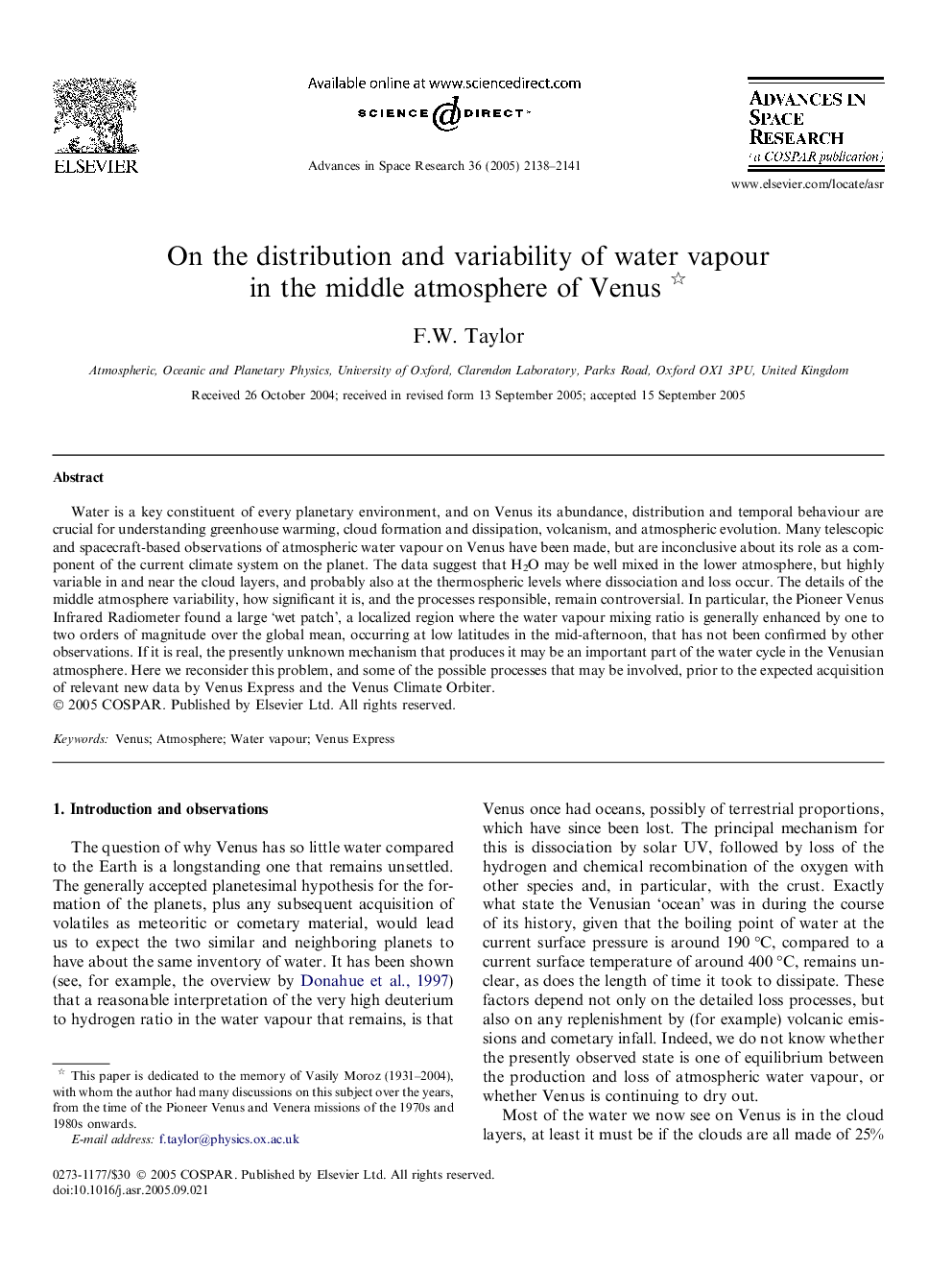| Article ID | Journal | Published Year | Pages | File Type |
|---|---|---|---|---|
| 1769579 | Advances in Space Research | 2005 | 4 Pages |
Abstract
Water is a key constituent of every planetary environment, and on Venus its abundance, distribution and temporal behaviour are crucial for understanding greenhouse warming, cloud formation and dissipation, volcanism, and atmospheric evolution. Many telescopic and spacecraft-based observations of atmospheric water vapour on Venus have been made, but are inconclusive about its role as a component of the current climate system on the planet. The data suggest that H2O may be well mixed in the lower atmosphere, but highly variable in and near the cloud layers, and probably also at the thermospheric levels where dissociation and loss occur. The details of the middle atmosphere variability, how significant it is, and the processes responsible, remain controversial. In particular, the Pioneer Venus Infrared Radiometer found a large 'wet patch', a localized region where the water vapour mixing ratio is generally enhanced by one to two orders of magnitude over the global mean, occurring at low latitudes in the mid-afternoon, that has not been confirmed by other observations. If it is real, the presently unknown mechanism that produces it may be an important part of the water cycle in the Venusian atmosphere. Here we reconsider this problem, and some of the possible processes that may be involved, prior to the expected acquisition of relevant new data by Venus Express and the Venus Climate Orbiter.
Related Topics
Physical Sciences and Engineering
Earth and Planetary Sciences
Space and Planetary Science
Authors
F.W. Taylor,
